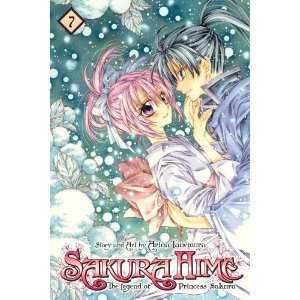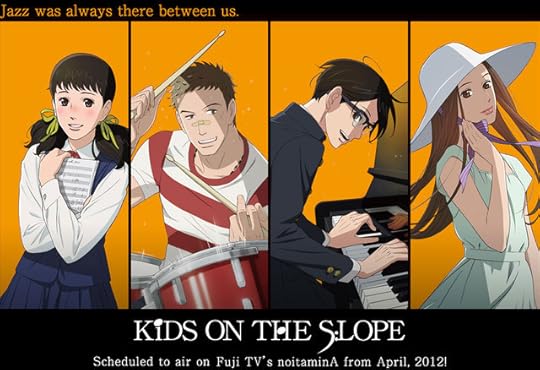S.Q. Eries's Blog, page 67
June 4, 2012
Ancient Olympic Fun Fact 23
2012 is significant in that it is a presidential election year, a leap year, and a summer Olympic year! The modern Olympics, of course, were inspired by the ancient Greek Olympics, a subject I’ve been researching for my work in progress. So in these months leading up to the 2012 London Games, I’ll be posting weekly tidbits about the original athletic festival that started it all.
Here’s this week’s fun fact:
Cheaters were severely punished.
Despite having to swear a solemn oath to the king of gods, cheating did occur at the ancient Olympics. This, of course, was frowned upon, and the organizers took measures to discourage it. Not only did violators face flogging by the Whip-Bearers, but heavy fines could be imposed, especially in cases of bribery.
Fines, by the way, were used to make statues of Zeus. Called Zanes, these statues stood near the entrance to the stadium, a physical reminder to athletes and their trainers of what happened if they broke the rules.
Tune in next week for more about the ancient Olympics!








May 31, 2012
Twin Foals!! And the Limits of High-Tech
 Aren’t they cute???!!! Introducing Deedee and the latest additions to Julie’s barn community!
Aren’t they cute???!!! Introducing Deedee and the latest additions to Julie’s barn community!
I know, I know, this has nothing to do with writing or research, but I saw the picture and had to pass it on. Aside from the fact that they’re ADORABLE, twin horses aren’t something you see every day. It’s actually unbelievable that these little girls are healthy and a good size.
The really funny thing is nobody suspected Deedee was carrying twins. So when she foaled last week, it was a complete surprise despite her having had an ultrasound. According to Julie, the babies were stacked on top of each other, so only one was visible.
That last bit about the ultrasound really made me laugh. Many of my friends are having babies now, but when they wave an ultrasound and say they’re having a boy or girl, hubby and I just smile and buy something gender-neutral for the shower. Nothing against the ultrasound, we know it’s a very handy tool, but we’ve met two couples now that were expecting one and got the other. So to hear that Deedee’s scan missed an entire baby horse is just confirmation that as amazing as high technology is, it’s not infallible.
By the way, the foals have yet to be named, but the names under consideration are Unbelievable and Remarkable. 








May 28, 2012
Ancient Olympic Fun Fact 22
2012 is significant in that it is a presidential election year, a leap year, and a summer Olympic year! The modern Olympics, of course, were inspired by the ancient Greek Olympics, a subject I’ve been researching for my work in progress. So in these months leading up to the 2012 London Games, I’ll be posting weekly tidbits about the original athletic festival that started it all.
Here’s this week’s fun fact:
The distinction between boys/men and colts/horses was not solely age based.
The ancient Games didn’t have weight divisions for their wrestling/boxing/pankration events, but as you’ve gathered from the previous installment, there were separate events for boys and men. It’s uncertain what the age cutoff was, but even if a youth was technically a boy, he could wind up in the men’s event if the Judges thought he was too well-developed to compete with his scrawnier peers. In fact, one of the Judges’ tasks during the month-long Olympic qualifiers was to determine what classifications young entrants fell in.
Tune in next week for more about the ancient Olympics!








May 24, 2012
Manga Review: Sakura Hime Vol. 7
 Arina Tanemura is a popular shojo mangaka, and one of her works currently being translated into English is Sakura Hime, a magical shojo story that puts a twist on a famous Japanese legend. Volume 7 has recently been released, and you can read on for the review. (Also, for those who are interested, you can click here for my reviews of earlier volumes).
Arina Tanemura is a popular shojo mangaka, and one of her works currently being translated into English is Sakura Hime, a magical shojo story that puts a twist on a famous Japanese legend. Volume 7 has recently been released, and you can read on for the review. (Also, for those who are interested, you can click here for my reviews of earlier volumes).
The story centers on Sakura, the granddaughter of the Moon princess Kaguya. As her descendent, Sakura wields the power to defeat Youko, monsters from the Moon, but Sakura’s Moon heritage also means she’s predisposed to becoming a Youko herself…
Back Cover Blurb
Every time Asagiri uses her powers, she shortens her life span. In spite of this, she continues to use her powers to fight her former lover, Ukyo. Though Ukyo will not attack her, this is a fight Asagiri cannot win.
The RevieW
Volume 7 is a mixed bag. In addition to battle scenes, there’s drama and suspense. Most of the romantic anguish stems from the conclusion of the Ukyo/Asagiri fight, and those who prefer their love stories tragic will eat up the ultimate fate of the star-crossed lovers.
There’s also angst of a different sort between Sakura and her brother. After chapters and chapters of inner turmoil, she finally accepts the fact that he is no longer the gentle person she once knew. However, Tanemura-sensei plays this less as a rift between family members and more as a woman struggling to let go of her first love. Though it has been mentioned in this series that sibling marriages were acceptable in the Heian era, hearing Sakura refer to Enju this way does give off a squicky vibe.
Following the Ukyo/Asagiri duel, Aoba (not surprisingly) proceeds to battle Enju for Sakura. But Tanemura-sensei throws us for a loop by pitching Sakura in an unexpected fight against Rurijo and then heightens matters with an astonishing reveal about Enju’s ultimate goal. Unfortunately, the final conclusion to the Shura Yugenden isn’t quite satisfying (all that firepower and manpower and the bad guys still get away?), but it does ensure that Sakura will face Enju again – and this time with full knowledge of what’s at stake.
By the way, Volume 7 includes several extras including bonus funnies and closing remarks from Tanemura-sensei and her assistants.
In Summary
The Shura Yugenden arc reaches its conclusion. Though the ultimate outcome of the battle is predictable, what Sakura discovers in mid-battle should take you by surprise.
First published at the Fandom Post.








May 21, 2012
Ancient Olympic Fun Fact 21
2012 is significant in that it is a presidential election year, a leap year, and a summer Olympic year! The modern Olympics, of course, were inspired by the ancient Greek Olympics, a subject I’ve been researching for my work in progress. So in these months leading up to the 2012 London Games, I’ll be posting weekly tidbits about the original athletic festival that started it all.
This week’s installment is a list of ancient Olympic events (in order of appearance). It should be noted that, like the modern Games, some sports only lasted a few Olympiads before being dropped from the festival.
Stade-race (approximately 600 feet)
Diaulos footrace (two double laps on a 600-foot track)
Dolichos footrace (ten or twelve double laps on a 600-foot track)
Pentathlon (discus, long jump, javelin, running, wrestling)
Wrestling
Boxing
Four-horse chariot race
Pankration
Horserace
Footrace for boys
Wrestling for boys
Pentathlon for boys
Boxing for boys
Race in armor
Mule cart race
Race for mares
Two-horse chariot race
Trumpeter competition
Herald competition
Four-colt chariot race
Two-colt chariot race
Colt race
Pankration for boys
Tune in next week for more about the ancient Olympics!








May 16, 2012
Anime Review: Kids on the Slope
 Kids on the Slope is part of Crunchyroll‘s Spring 2012 simulcast lineup, and I love it. With anime, I have a weakness for musicians, romance, period pieces, and slice of life, and Kids on the Slope includes it all. So far, five episodes have aired, and I’ve watched each at least twice.
Kids on the Slope is part of Crunchyroll‘s Spring 2012 simulcast lineup, and I love it. With anime, I have a weakness for musicians, romance, period pieces, and slice of life, and Kids on the Slope includes it all. So far, five episodes have aired, and I’ve watched each at least twice.
The anime is set in Kyushu during the early 1960s. Kaoru, the main character, has just moved there to live with his uncle’s family. He’s book smart and an excellent classical pianist, but he’s also an introvert and has moved so often that he’s resigned to being the outsider. He anticipates once again being marginalized in his new school, but instead meets Sentaro and Ritsuko. Through them, he discovers friendship and an unexpected passion for jazz.
Music is indeed front and center in this anime. Each episode is named after and features a particular jazz standard. The music, by the way, is produced by the amazing Yoko Kanno, who put the bebop in Cowboy Bebop and was composer for Escaflowne, my favorite anime of all time. In addition to an awesome soundtrack, the jam sessions are animated beautifully. Between me and my husband, we play six musical instruments, and it makes us cringe when the animation doesn’t match how an instrument’s played. The best I’ve seen before this was Nodame Cantible, but its instrumental animation had a CG look that clashed with the series’ overall style. With Kids on the Slope, hand placement, fingering, drum strokes, instruments – everything is accurate and blends stylistically with the rest of the anime, making it a delight to watch.
Another thing I really appreciate is Kaoru’s transformation from classical to jazz pianist. Like him, I was also classically trained on piano, but when I hit high school, I joined the school jazz band. Same instrument, completely different ballgame. Watching his struggles reminds me of my own difficulties with improvisation and jazz chords, even though Kaoru picks it up much faster than I ever did.
In terms of romance, the main cast consists of two boys and one girl, which pretty much screams love triangle. As of Episode 4, circumstances develop such that the love triangle starts looking more like a love pentagon. While there are many funny bits (Sentaro’s efforts to ask Yurika out are laugh out loud funny), Kids on the Slope steers more in the direction of teen angst than comedy. Both boys come from troubled households which means they also bring a significant amount of baggage into any and all of their relationships.
I’m not sure what the rating for this series is, but I’d peg it as 13 and up. Sentaro’s afterschool brawls are the extent of its violence, and there’s no nudity thus far. However, the boys’ complicated family circumstances and a graphic death scene push it into the realm of non-kiddie fare. Actually, despite the youth of the main characters, I’d guess the target audience is adult females given the series’ particular pacing and introspection. It certainly got me hooked. Still, I’d invite anyone in the 13 and over crowd to give Kids on the Slope a try, if only to check out its awesome instrumental sequences.








May 14, 2012
Ancient Olympic Fun Fact 20
2012 is significant in that it is a presidential election year, a leap year, and a summer Olympic year! The modern Olympics, of course, were inspired by the ancient Greek Olympics, a subject I’ve been researching for my work in progress. So in these months leading up to the 2012 London Games, I’ll be posting weekly tidbits about the original athletic festival that started it all.
Here’s this week’s fun fact:
The marathon was not an ancient Olympic event.
The marathon is actually a modern sport. Although the ancients honored Phidippides, the messenger who made the memorable run between Marathon and Athens before dropping dead, they didn’t actually re-create his feat. The longest race at the ancient games was the dolichos, which consisted of ten or twelve double laps on a 600-foot track.
Still, that didn’t deter my runner husband from running his own personal marathon when we visited Olympia. He spent a day racing around the Olympic archaeological site (to the cheers of German tourists) until he’d racked up 26.2 miles (as measured by his GPS distance logger).
Tune in next week for more about the ancient Olympics!








May 9, 2012
Spring Fevers–now in hard copy format!
 Two months ago I mentioned the release of Spring Fevers, an anthology that includes my short story Resolution. It’s still out there–and FREE in downloadable format on Smashwords. But Elephant’s Bookshelf Press has now made a hard copy version available on Createspace for $7.99!
Two months ago I mentioned the release of Spring Fevers, an anthology that includes my short story Resolution. It’s still out there–and FREE in downloadable format on Smashwords. But Elephant’s Bookshelf Press has now made a hard copy version available on Createspace for $7.99!
So for those of you who prefer their books with paper pages and a cover (and I know you’re out there), here’s your chance to pick it up. And yes, the proceeds are all still going to charity.








May 7, 2012
Ancient Olympic Fun Fact 19
2012 is significant in that it is a presidential election year, a leap year, and a summer Olympic year! The modern Olympics, of course, were inspired by the ancient Greek Olympics, a subject I’ve been researching for my work in progress. So in these months leading up to the 2012 London Games, I’ll be posting weekly tidbits about the original athletic festival that started it all.
Here’s this week’s fun fact:
The ancient Olympics had no team competitions.
Some might be surprised by this considering how many team events there are in the modern Olympics. Even individual sports, such as gymnastics, often have a team version. But in ancient Greece, people glorified the physical excellence of the individual, and the festival at Olympia was a celebration of that gift in honor of the gods that bestowed it.
Tune in next week for more about the ancient Olympics!








May 3, 2012
Manga Review: Fullmetal Alchemist Vol. 27
Fullmetal Alchemist is a wildly popular manga that has spawned, among other things, two anime series, a movie, light novels, and video games. Although technically a shonen manga, it has a huge female following, thanks to mangaka Arakawa’s brilliant cast of characters and the heart and complexity she weaves into the plot. The American translation of Volume 27 has recently been released, and you can read on for the review. (For those interested in my reviews of earlier volumes, you can find them here).
 The story centers on Edward and Alphonse Elric, two brothers who attempted to bring their dead mother back to life through a forbidden alchemical ritual. However, the ritual went wrong, taking Ed’s leg and Al’s entire body. At the cost of his arm, Ed manages to graft Al’s soul onto a suit of armor. Equipped with mechanical “auto-mail” to replace his missing limbs, Ed becomes a state alchemist in hopes of finding the one thing that can restore their bodies…the legendary Philosopher’s Stone.
The story centers on Edward and Alphonse Elric, two brothers who attempted to bring their dead mother back to life through a forbidden alchemical ritual. However, the ritual went wrong, taking Ed’s leg and Al’s entire body. At the cost of his arm, Ed manages to graft Al’s soul onto a suit of armor. Equipped with mechanical “auto-mail” to replace his missing limbs, Ed becomes a state alchemist in hopes of finding the one thing that can restore their bodies…the legendary Philosopher’s Stone.
Back Cover Blurb
With the help of Hohenheim and their allies, the Elric brothers launch a desperate final attack against the homunculus “father.” But to claim victory, some may have to make the ultimate sacrifice. And when the dust clears, will a happy ending await our favorite characters in the final volume of Fullmetal Alchemist?
The Review
(Spoiler Alert!!!)
Considering the many events of the Day of Reckoning, they seem to span several days instead of one. The conclusion to the battle against the homunculus Father is no different. The actual duration of the fight is just minutes, but so much happens so quickly, Arakawa-sensei burns through panels to convey everything. Action fans will get their fill with missiles, bullets, alchemy, and old-fashioned fisticuffs all aimed toward the former Dwarf in the Flask. At times, the images do get kind of grotesque. Part of it is due to the ferocity of the battle, but part of it is because of the homunculus’ monstrous nature. He, as an Amestrian soldier notes, is a dead ringer for Edward, but when his opponents’ firepower starts taking its toll, the distortions that result in the homunculus’ body are pretty scary.
During the course of the fight, both brothers wind up back at the portal of Truth. The way Al goes back is heartrending, and Ed’s reaction to it kicks up the emotion several levels. In contrast, the scene in which Ed returns evokes a different type of tension, coming across more like a showdown of wits. He has an intriguing philosophical interchange with the shadowy figure of the portal, and though the cynical part of me wonders whether their bargain actually is an exchange of “equivalents” (the item Ed offers is used, after all), Ed’s solution is one that took me by surprise.
With the final battle over, Arakawa-sensei wraps things up for her characters. Considering how large the cast is, there is a lot of wrapping up to do. (If you look at the splash page for Chapter 107, you get a feel for how big that task is). She does an excellent job though, covering everything from the Xing travelers to the Ishbalan refugees to Hohenheim’s return to Resembool. Fullmetal Alchemist comes to a wonderfully satisfying conclusion, and I salute Arakawa-sensei for a compelling story, consistently delightful artwork, and unforgettable characters in this series which, in my opinion, is bound to become a classic.
In Summary
It’s a wild final showdown against the homunculus Father, ultimately leading both Elric boys back to the portal of Truth. Arakawa-sensei does an amazing job bringing the series’ multiple journeys and quests to an end in the concluding volume of Fullmetal Alchemist.
First published at the Fandom Post.













